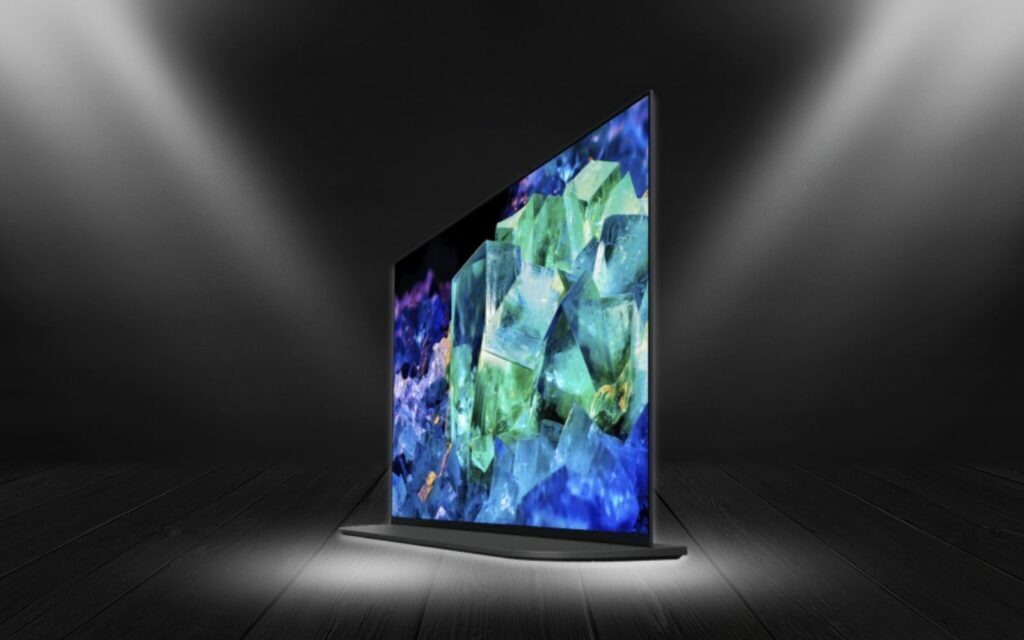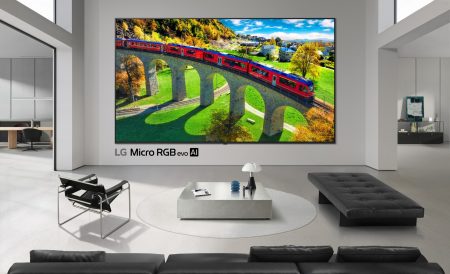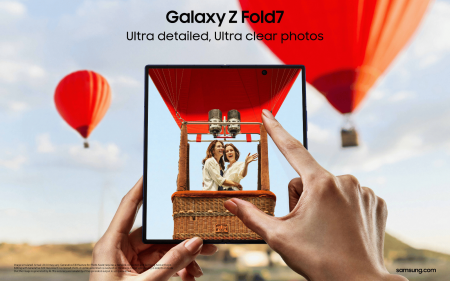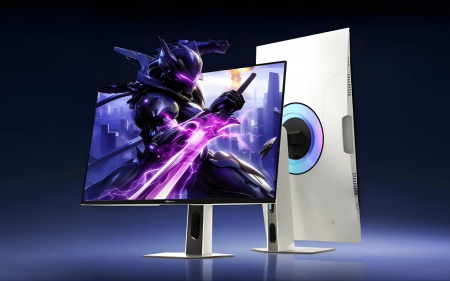If you’ve been paying attention to CES 2022, you’ll know that Samsung’s announced a new bit of screen tech. See, it’s doing something besides shoehorned NFT features for its TVs after all. Called QD-OLED (Quantum Dot Organic Light Emitting Diode), this creation from Samsung Display is a little odd. Why? Well, because Sony’s planning on releasing the first TV set to use it — the Bravia XR A95K.
But what is QD-OLED, besides a way to market the Next Big Thing™ in television tech to people who simply must have the very latest gear? That’s the question we’re about to answer for you.
QD-OLED 101
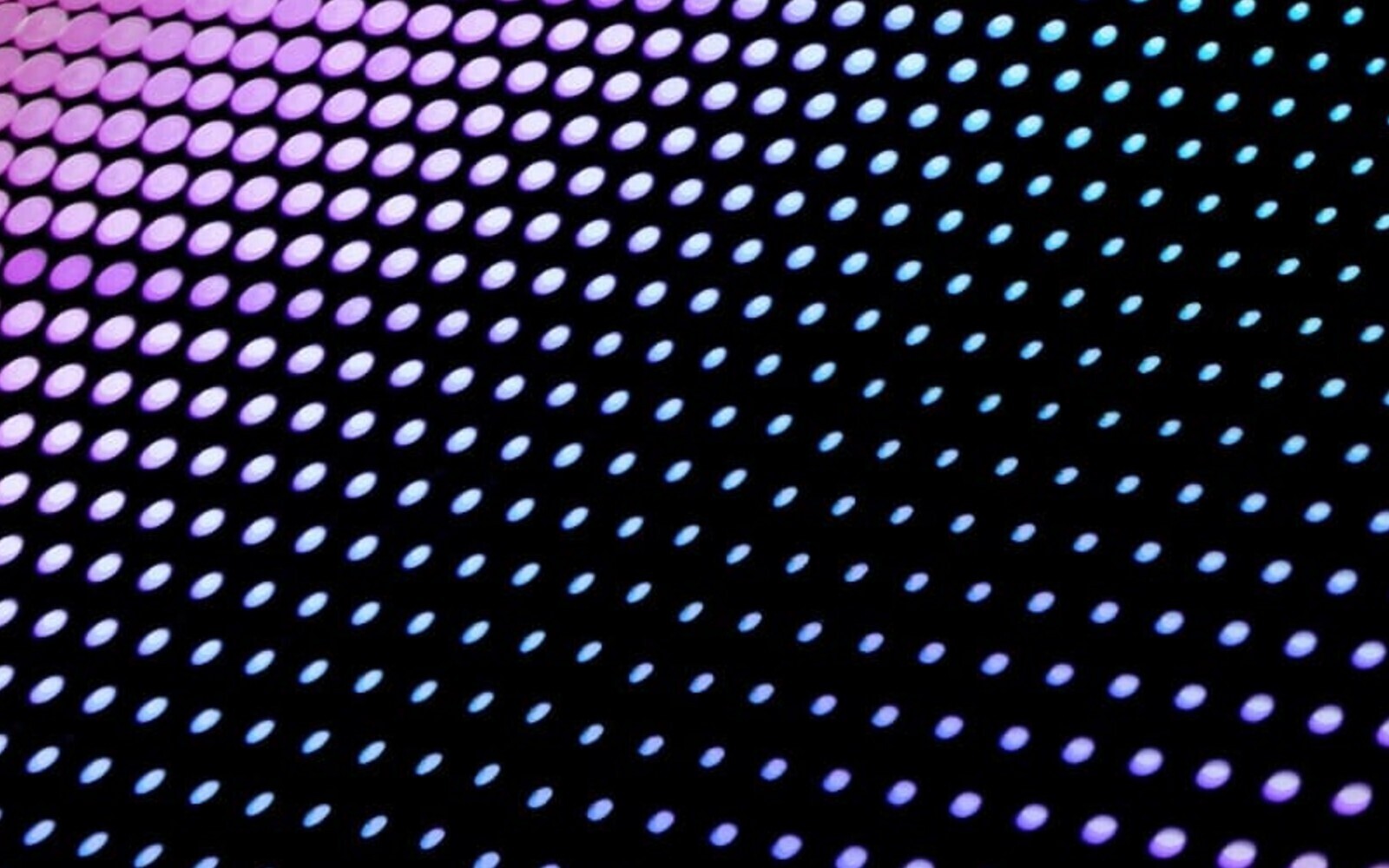 It should be fairly obvious, based on the acronym alone, that Samsung Display’s new toy is a merger of its OLED and quantum dot technology. Samsung has marketed its quantum dot TVs under the QLED brand — now they’ve gone and just squished the two lines together. This polymerisation is called QD Display (by Samsung), rather than the unwieldy QD-OLED we’ve used up till now.
It should be fairly obvious, based on the acronym alone, that Samsung Display’s new toy is a merger of its OLED and quantum dot technology. Samsung has marketed its quantum dot TVs under the QLED brand — now they’ve gone and just squished the two lines together. This polymerisation is called QD Display (by Samsung), rather than the unwieldy QD-OLED we’ve used up till now.
The advantages, apparently, are the combination of how OLED panels handle black spaces and QLED’s colour reproduction. If Samsung’s not just blowing smoke, then display maker LG’s reign as the king of OLED TV panels is looking a little shaky. The (one) South Korean company is offering a ‘best of both worlds’ situation that the (other) South Korean company just can’t match at the moment. Unless LG’s been keeping secrets, anyway.
Evolution (hold the Re-)
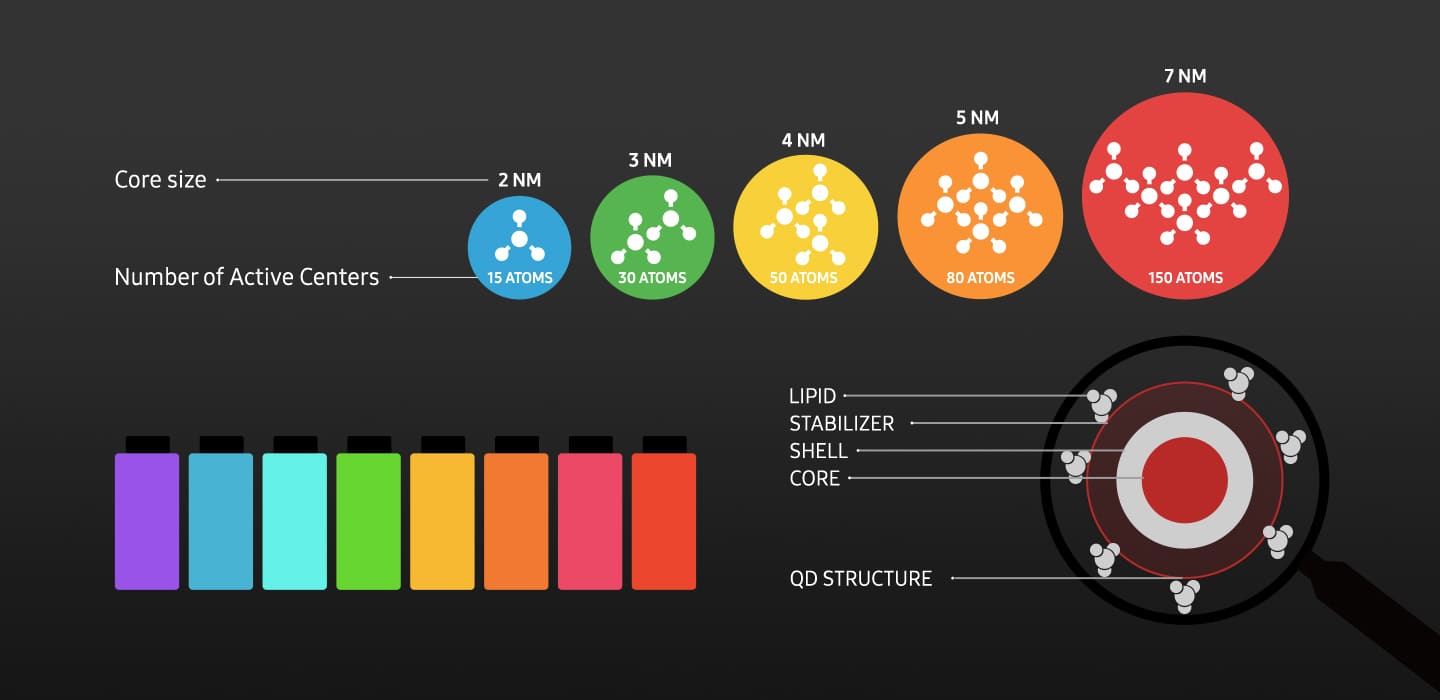 At its most basic, Samsung Display’s QD-OLED is just an OLED screen with quantum dots applied. “Big deal,” you might say. Perhaps. But it hasn’t been done up to this point, so it actually is a big deal. Quantum dots are differently-sized particles that emit certain hues when struck by certain wavelengths. This, Samsung claims, lets it offer a “…very wide range of color expressions …” not seen on other available panels.
At its most basic, Samsung Display’s QD-OLED is just an OLED screen with quantum dots applied. “Big deal,” you might say. Perhaps. But it hasn’t been done up to this point, so it actually is a big deal. Quantum dots are differently-sized particles that emit certain hues when struck by certain wavelengths. This, Samsung claims, lets it offer a “…very wide range of color expressions …” not seen on other available panels.
Samsung’s making a big deal of the ‘O’ part of the OLED equation as well. LG’s TVs use a combination of yellow and blue organic material for its OLED screens. This is filtered, through various subpixels, to create colours onscreen. But while traditional OLED handles dark areas amazingly well, coloured areas can appear drab or washed out.
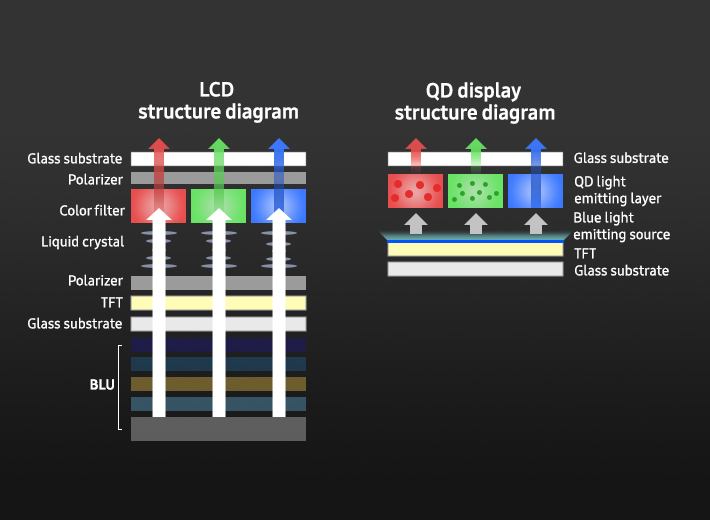 Samsung reckons its reliance only on a blue organic substrate (it “has the strongest light energy”, apparently) and swapping out of coloured subpixels for its quantum dots are a winner. It’ll allow for even thinner screens, thanks to a less complicated system of layers (compared to LED panels). But there are still challenges that need to be overcome.
Samsung reckons its reliance only on a blue organic substrate (it “has the strongest light energy”, apparently) and swapping out of coloured subpixels for its quantum dots are a winner. It’ll allow for even thinner screens, thanks to a less complicated system of layers (compared to LED panels). But there are still challenges that need to be overcome.
OLED, and this new QD-OLED tech, suffers from one significant problem. It’s not nearly as bright as screens packing standard LED tech. LED TVs can hit 2,000 nits of brightness, while the best OLED can do at present is about 1,000 nits. And that’s only on a portion of the screen. Overall, OLED tends to max out at 200 nits over an entire (large) screen. Samsung’s talking a big game on its colour reproduction over brightness, with good reason, but standard OLED is still wonderful. It remains to see whether QD Display will give LG’s favourite tech a smack upside the head.
Coming soon
But we don’t have to wait long for QD-OLED to make an appearance. As we mentioned, Sony’s launching the very first TV featuring the technology. This makes a change from the usual LG-loaded tech ladled into the Bravia lineup. Samsung itself will have a 65in set featuring the tech out before year’s end. It’ll feature four HDMI 2.1 ports and refresh at 144Hz. That’s… about all anyone knows at this point. There’s no name and certainly no images of it. Yet.
There are also gaming monitors featuring the tech on the way, but what nobody really knows at this point is: how will the panels do, long term? And pricing hasn’t even been hinted at. This might be the various entities hedging their bets, or maybe it’s because Samsung Display’s new combination will frighten all but the hardiest wallet into submission. We’ll have to wait and see if QD-OLED really is as good as Samsung says it is.

